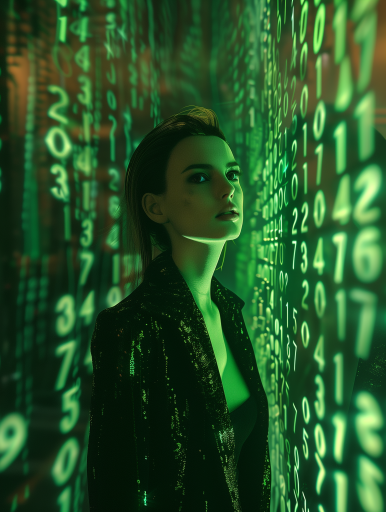Explore the Best AI Image Gallery

The New Frontier: AI-Generated Visual Content in Creative Industries
In recent years, AI-generated visual content has emerged as a significant player in the creative industry, reshaping the way artists, designers, marketers, and other creatives produce and distribute art. By leveraging advanced algorithms and machine learning techniques, AI tools are not just augmenting but often revolutionizing traditional workflows. This has far-reaching implications not just for artists and creators, but for audiences and consumers as well.
What is AI-Generated Visual Content?
AI-generated visual content refers to any image, video, or graphical element created with the assistance of algorithms or artificial intelligence. Technologies such as Generative Adversarial Networks (GANs), style transfer, and deep learning are utilized to generate new, unique visual materials based on training data. Artists now have tools that can produce anything from photo-realistic landscapes to abstract art, all through simple inputs and prompts.
Applications in the Creative Industry
The applications of AI-generated visual content are vast and varied, spanning multiple sectors within the creative industry:
- Art and Design: Artists are using AI as a collaborative partner, experimenting with new mediums and styles that blend traditional artistry with algorithmic enhancements. This has led to unique artworks that challenge the definition of art itself.
- Advertising and Marketing: Brands leverage AI to generate customized visual content that resonates with their target audience. From personalized imagery for social media campaigns to tailored product designs, AI helps create more engaging marketing materials.
- Film and Animation: AI is used to create visual effects and animations, saving time and resources on projects. Techniques like deepfake technology have also opened exciting avenues in storytelling, although not without controversy.
- Gaming: In the gaming industry, AI-generated content can be employed to create expansive, realistic environments and character designs, improving player experience.
- Fashion: The fashion industry utilizes AI to predict trends and create new designs, as well as to generate virtual clothing assets for online shopping environments.
Ethical Considerations
As the use of AI in visual content creation grows, several ethical concerns must be addressed:
- Copyright Issues: The question of authorship arises when AI generates art. Who holds the copyright - the programmer, the user, or the AI itself? The legal landscape is still unclear.
- Authenticity: With AI's ability to mimic styles and techniques, the line between genuine artistry and automated production blurs. This raises questions about the value of “real” art versus algorithm-generated creations.
- Bias and Representation: AI systems trained on biased datasets may perpetuate stereotypes or exclude underrepresented artists. Care must be taken in curating these datasets to promote diversity and inclusion.
- Job Displacement: As AI tools become more prevalent, concerns about job loss in creative professions are growing. While AI can enhance creativity, it may also undermine the value of human-born skill sets.
The Future of AI in Creative Content
Looking ahead, the future of AI-generated visual content appears bright but remains complex. As technology advances, the collaborative interplay between humans and AI will likely deepen. Here are some trends to watch:
- Increased Personalization: Future AI tools will likely enable more personalized and tailored content creation, allowing artists and brands to hone in on their audience more effectively.
- Real-Time Content Generation: As AI becomes more sophisticated, the possibility of real-time, adaptive content creation in video games, films, and live performances will grow.
- Integration into Everyday Tools: Graphic design software and photo editing applications will increasingly incorporate AI tools, making sophisticated content creation accessible to non-experts.
- Ethical Guidelines and Standards: As the industry matures, we can expect a call for standards and best practices to govern the use of AI in creative fields, addressing the ethical concerns mentioned earlier.
Conclusion
AI-generated visual content is not merely a fad; it represents a paradigm shift in the creative industries. As technology continues to evolve, embracing these tools can lead to exciting new avenues for artistic exploration and innovation. However, as we grapple with the ethical implications of AI's role in creative fields, a thoughtful approach will be crucial to harnessing its benefits while minimizing potential downsides. The future holds potential for a dynamic partnership between human creativity and artificial intelligence, one that could redefine the very nature of art and expression.


















](https://images.ai-img.art/thumbnails/150/4289d1230b86a96c4d556636c3167bed0ef38f850826549517e4e45db4d87bf7.webp)

](https://images.ai-img.art/thumbnails/150/008b5d5d49667cc2e93a5f8a8adfaa545963da99c39ff0901f5296294636400d.webp)

](https://images.ai-img.art/thumbnails/150/f67d9af3398150f2ab1bcf250717fea134275e2ca896252b54a4d9bb3719f9ac.webp)













](https://images.ai-img.art/thumbnails/150/c2c9c48b38fae37f0a457b80b084ed01ba803810fc8f488c8f610c03abc74049.webp)


](https://images.ai-img.art/thumbnails/150/bddf3ae4a232290858389b933c866ad3be429ef2e25c23a9f4d7713ed6e44d0b.webp)

](https://images.ai-img.art/thumbnails/150/f9584153b4cddd8c9fab611dc10247549b275c59bc173251e37d0935874f9deb.webp)